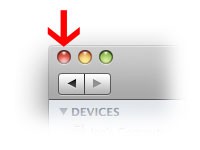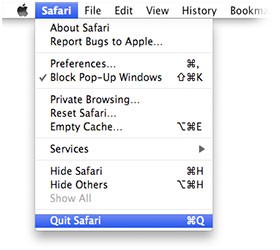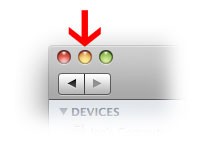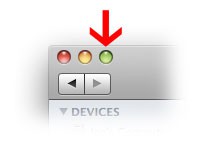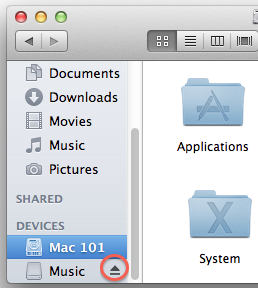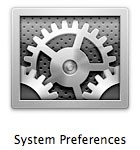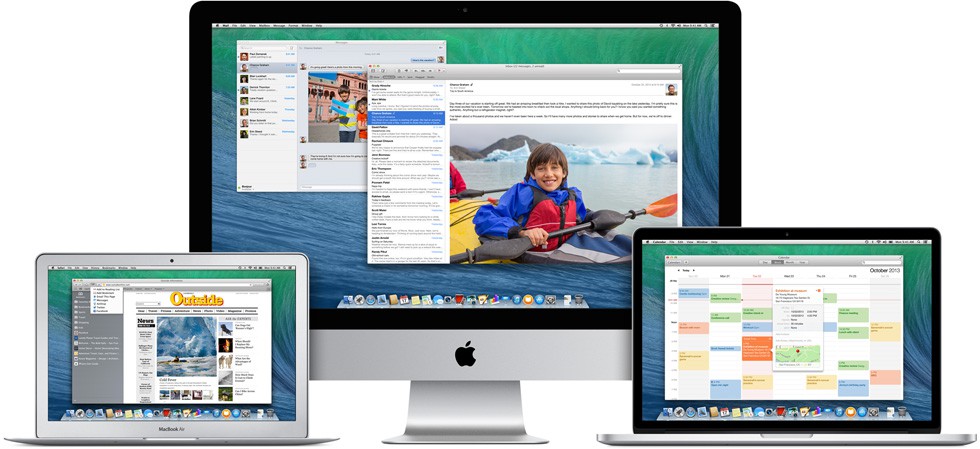
There are certain tasks on your Windows computer that you've probably been doing for years. Switching to the Mac can be daunting at first, but I promise you, it's not as challenging as it looks. In this post we'll show you how to accomplish the same tasks on a Mac.
| In Windows, I used to... | On a Mac, I can... |
| Right-click my mouse to access commands or perform actions in a shortcut menu. |
If you're using an Apple one-button mouse, Control-click items (press and hold the Control key while you click) to access commands or perform actions in a shortcut menu. Or you can opt to use a multibutton mouse, and right-click as usual. To enable the secondary button on a mouse: From the Apple () menu or the Dock, choose System Preferences. Select Mouse and choose the Secondary Button from one of the Primary Button pop-up menus. If you're using a MacBook or MacBook Pro computer's trackpad: From the Apple () menu or the Dock, choose System Preferences. Select Trackpad and select the checkbox "Place two fingers on trackpad and click button for secondary click." Now you can hold two fingers on the trackpad and click to use the shortcut menu. If you selected the Clicking option, then right-click is enabled simply by tapping two fingers simultaneously onto the trackpad. |
| Press the Backspace key to delete or the Delete key to forward delete | Press Delete key to backwards delete. For Mac portables, press the Function (fn) and Delete key to forward delete. |
| Use My Computer to see and access everything on my computer. |
Open a Finder window, choose Computer from the Go menu. From here you can view and access all the files on your Mac. You can also use Spotlight to quickly and accurately locate anything on your computer.
|
| Use the Start menu and the taskbar to access programs, folders, and files. |
Use the Dock and Launchpad (in OS X Lion) to access applications or your favorite items. To add aliases to your favorite items, drag and drop them to the right side of the Dock. To add your favorite applications, drag and drop them to the left side of the Dock. You can drag the icons off the Dock at any time to delete the aliases. |
| Use Windows Explorer to find programs, files, and folders on my computer. |
Use the Finder to find applications, files, or folders on your computer.
To open a new Finder window, click the Finder icon on the Dock. |
| Use My Computer to access content from various drives, such as a hard drive or a optical disc. | See and access content on any mounted disk, mounted volume (external hard drives and flash drives), or discs (CD or DVD) by double-clicking the appropriate icon that appears in the devices list in Finder when the device or media is connected or inserted. If certain kinds of discs don't appear on the desktop as expected, choose Finder > Preferences, click the Sidebar button, and check which items should appear (under DEVICES). |
Use these keys as shortcuts:
|
Use these keys as alternatives:
|
| In Windows, I also used to... | On a Mac, I can... |
| Press Ctrl+Alt+Delete to terminate unresponsive programs. |
Press Command-Option-Escape (Esc) to force quit unresponsive applications. Once you press these keys, select any application from the Force Quit window and click Force Quit. You can also Force Quit by Control-clicking the item on the Dock and select Force Quit. |
| Click the close box to close windows. |
Click the close button (the round, red one in the upper-left corner) to close windows.
|
| Click the close box to exit programs. |
From the application menu, choose Quit Application name, or press Command-Q, to quit an application.
|
| Click the minimize box to minimize windows to the taskbar. |
Click the minimize button (the round, yellow one in the upper-left corner) to minimize windows to the Dock. You can also use Command-M as a shortcut.
|
| Click the maximize box to maximize my window. |
Click the zoom button (the round, green one in the upper-left corner) to expand your window.
When you're in an application window, you can make the window full screen by clicking the full screen button in the top-right corner of the application window.
|
| In Windows, I also used to... | On a Mac, I can... |
| Press a button to eject discs or disks. |
Drag the disc, disk, or volume icon to the Trash (it turns into an Eject icon) to eject or unmount items. Or, in the Finder window click the Eject icon next to the volume to unmount it.
You can also press the Eject key on your keyboard (in the upper-right corner) to eject a CD or DVD. |
| Press the Control (Ctrl) key for keyboard shortcuts (such as Ctrl+C to copy). | Press the Command key for keyboard shortcuts (such as Command-C to copy). |
| Press the Alt key as a modifier, or to type special characters. | Press the Option key as a modifier, or to type special characters (such as é). You can learn more about inputting special characters here. |
| Perform various functions from window menus. | Perform various functions from menus in the menu bar at the top of your screen. The contents of the menu bar changes, according to the current active application. |
| In Windows, I also used to... | On a Mac, I can... |
| Access Properties to set application, folder, or file options. | Use the Info window to set application, folder, or file options. To open an Info window, select an item and choose Get Info from the File menu (or press Command-I). |
| Move unwanted files and folders to the Recycle Bin. |
Drag unwanted files and folders to the Trash in the Dock. To empty the Trash, choose Empty Trash from the Finder menu (or press Shift-Command-Delete in the Finder). You can also click on the file that you would like to delete and use Command-Delete as a shortcut. |
| Rename documents by clicking Rename this file in the File Tasks menu. |
Select any file, folder, or application and press the Enter key to display the name in a text box. Rename the item as anything you like by typing over the text.
|
| Use the Performance control panel to check system performance. | Use Activity Monitor to check system performance. To open Activity Monitor in OS X Lion, click the Launchpad icon in the Dock, and click Utilities. Then click Activity Monitor. |
| Make shortcuts to an item by dragging and pressing Alt or make a copy by dragging and pressing Ctrl. |
To make an alias to an item, click it once and from the File menu choose Make Alias (or press Command-L). Or, drag the item and press the Command key and the Option key, a black arrow will appear, drop the item to make an alias. To make a copy of an item, select it and from the File menu choose Duplicate (or press Command-D). Or, drag the item and press the Option key, a green Add circle will appear, drop the item to make a copy. |
| In Windows, I also used to... | On a Mac, I can... |
| Store and access files in My Documents and My Pictures folders. |
Store files and content in your Documents and Pictures folders. To access your Documents and Pictures folders, open Finder and select Documents or Pictures from the favorites list of the Finder sidebar. In Finder under the favorites list, you also have folders to store your music and movies. |
| Use Windows Messenger to chat with buddies. | Use iChat to chat with buddies. iChat allows you to chat with anyone who has an AIM (AOL Instant Messenger), Yahoo, Google Talk, or me.com address. If you don't have one, you can sign up for an Apple ID for free and you can get a me.com account, go here to learn more). |
| Use Microsoft Photo Editor (or My Pictures) to view and edit pictures, Windows MovieMaker to edit my home movies, and Windows Media Player to listen to tunes. |
Use iPhoto to view and edit pictures, iMovie to edit your home movies, and iTunes or QuickTime Player to listen to tunes. iTunes also allows you to burn music discs, buy music and movies from the iTunes Store, and more. Your Mac may also come with GarageBand to compose your own music and iDVD to make your own DVDs (if your Mac has a DVD burner). |
| Use ScreenTaker to take pictures of my screen. | Use Grab or Preview to take pictures of your screen. To take a screen shot, press Command-Shift-3. |
| In Windows, I also used to... | On a Mac, I can... |
| Use the Control Panel to customize various settings. |
Use System Preferences to customize various settings.
To open it, click the Launchpad icon in the Dock (in OS X Lion), then click System Preferences. Or click System Preferences from the Dock. Then click an item that you'd like to configure. |
| Use Network Connections to configure network settings. |
Use Network preferences to configure (and troubleshoot) network settings. To open Network preferences, click the Launchpad icon in the Dock, and click System Preferences. Then click Network. |
| Use Printers & Faxes to set up my printer and fax tasks. |
Use Print & Scan preferences to set up your printer and fax tasks. To open Print & Scan preferences, click the Launchpad icon in the Dock, and click System Preferences. Then click Print & Scan. |
| Use Device Manager to get information about my computer. | Use System Information to get hardware and software information about your computer. From the Apple () menu, choose About This Mac, then click More Info. |


 Shift key
Shift key Control key
Control key Option key
Option key Command key
Command key Delete key
Delete key